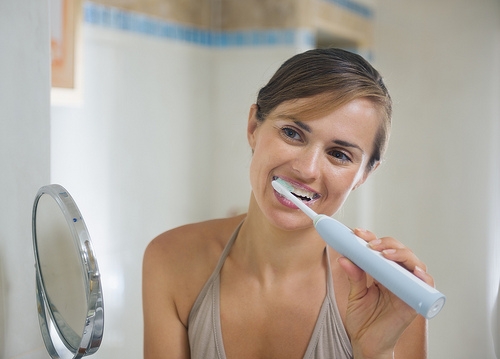Osteoporosis and Oral Health
November 13th, 2024

Today, Dr. Cody Henriksen and our team at Dental Comfort Center thought we would examine the relationship between osteoporosis and oral health, since 40 million Americans have osteoporosis or are at high risk. Osteoporosis entails less density in bones, so they become easier to fracture. Research suggests a link between osteoporosis and bone loss in the jaw, which supports and anchors the teeth. Tooth loss affects one third of adults 65 and older.
Bone density and dental concerns
- Women with osteoporosis are three times more likely to experience tooth loss than those without it.
- Low bone density results in other dental issues.
- Osteoporosis is linked to less positive outcomes from oral surgery.
Ill-fitting dentures in post-menopausal women
Studies indicate that women over 50 with osteoporosis need new dentures up to three times more often than women who don’t have the disease. It can be so severe that it becomes impossible to fit dentures correctly, leading to nutritive losses.
Role of dental X-rays in osteoporosis
The National Institute of Arthritis and Musculoskeletal and Skin Diseases (NIAMS) released research that suggest dental X-rays may be used as a screening tool for osteoporosis. Researchers found that dental X-rays could separate people with osteoporosis from those with normal bone density. As dental professionals, our team at Dental Comfort Center are in a unique position to screen people and refer them to the appropriate doctor for specialized care.
Effects of osteoporosis medications on oral health
A recent study showed that a rare disease, osteonecrosis, is caused by biophosphenates, a drug taken by people for treatment of osteoporosis. In most cases, the cause was linked to those who take IV biophosphenates for treatment of cancer, but in six percent of cases, the cause was oral biophosphenates. If you are taking a biophosphenate drug, let Dr. Cody Henriksen know.
Symptoms of osteonecrosis
Some symptoms you may see are pain, swelling, or infection of the gums or jaw. Additionally, injured or recently treated gums may not heal: teeth will be loose, jaws may feel heavy and numb, or there may be exposed bone. Some of the steps you can take for healthy bones are to eat a healthy diet rich in calcium and vitamin D, regular physical exercise with weight-bearing activities, no smoking and limited use of alcohol, and report problems with teeth to our office, such as teeth that are loose, receding gums or detached gums, and dentures that don’t fit properly.
For more information about the connection between osteoporosis and oral health, or to schedule an appointment with Dr. Cody Henriksen, please give us a call at our convenient Sioux Falls, SD office!


